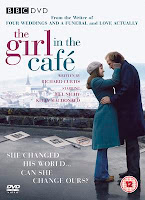 Everyone likes good publicity: just look at the film posters quoting reviews of the movie.
Everyone likes good publicity: just look at the film posters quoting reviews of the movie.
Of course, these can be … misleading.
A recent blurb for the TV movie The Girl in the Café quoted The Oregonian newspaper:
“An endearing romantic comedy.”
However, what The Oregonian actually said was:
“This new offering from HBO Films is at its heart a bit of political propaganda wrapped into an endearing romantic comedy that starts losing its laughs when it gets to Reykjavik and decides its teachable moment has arrived.”
You can see more of these at Gelf Magazine.
You probably don’t have to be so economical with the actualité. But it’s not so easy to bathe in glory. One great content idea is a gallery of what people have said about your company or site. However, content usually comes with a price, and as we discovered recently with a CNBC video clip of our CEO, simply linking to a video or article is not enough. Within hours of linking to the clip on CNBC, they imposed a subscription-only tag. There’s nothing suspicious here: in a charged-content model, content is usually free for a set period before the curtain comes down.
News providers such as magazines, newspapers and broadcast media have been arguing for years about charging for content (news agencies like Reuters and the Press Association survive by charging for content, but their main customers are the aforesaid magazines, newspapers and broadcast media). Because the enduring ethos of the internet is “everything is free”, it’s been very difficult to get drive-by surfers to pay for anything. Some have tried. Most have failed. TIME magazine charged for content from their magazine for four years and made a profit (the only part of the operation that did!!), but when their sister site AOL decided to open up their content to everyone, TIME decided to drop the “curtain” — and still made a profit!
Incidentally, TIME used to charge for magazine content seven days after it hit the newsstands on the basis that people would pay for a magazine online which they couldn’t buy on the streets. The exception were religious stories — which they charged for immediately: religious feeling as it is in the U.S., people would pay for that content at any time. Religious stories were the big money earners!
The fact is that some copy is off limits to non-payers (or at least non-subscribers), and while a “What They Say About Us” page would be great, it will not be easy.
Leave a Reply